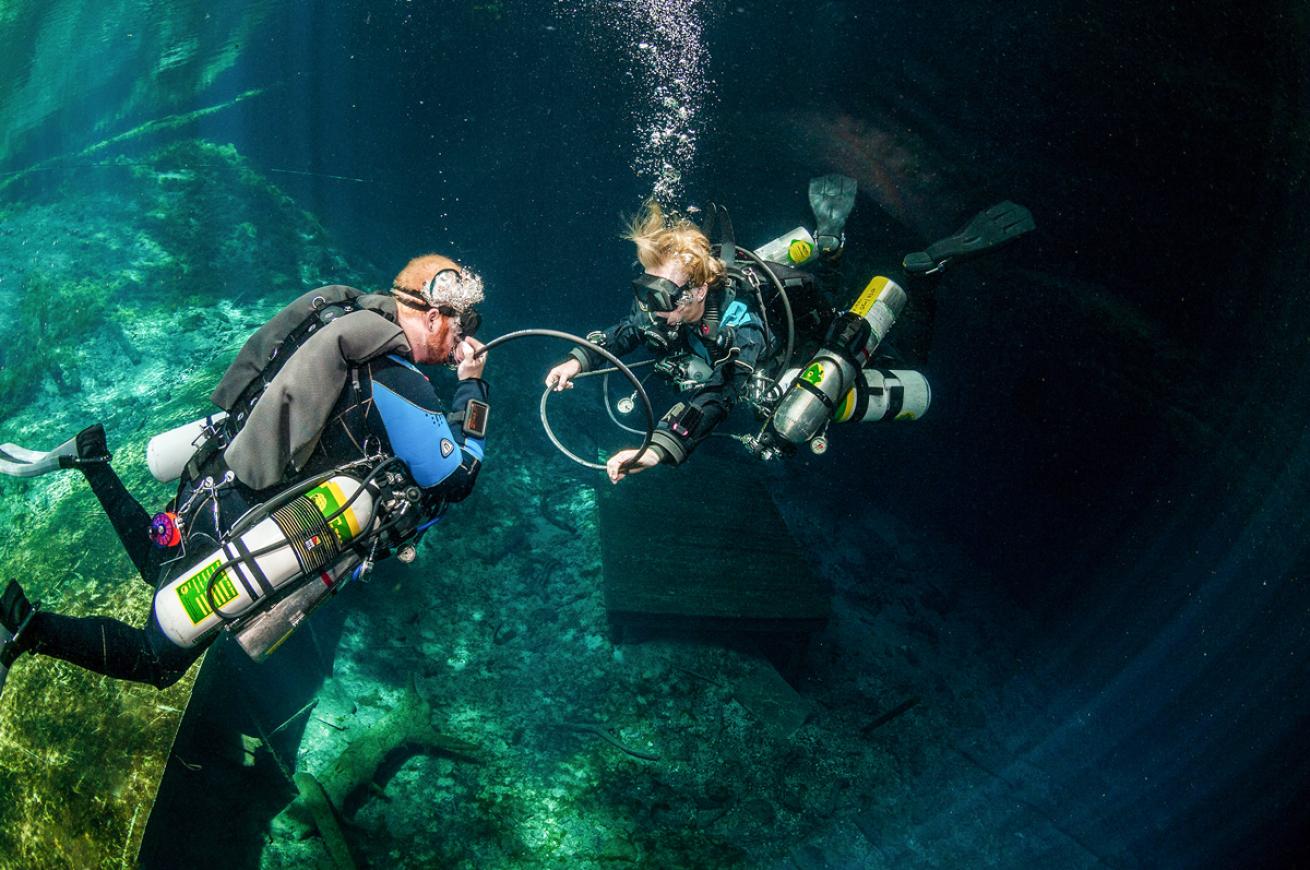What is PADI Sidemount Diver Course?

Karl Shreeves / PADIPADI Sidemount Diver Instructor teaches student skills underwater.
You probably learned to scuba dive by carrying a tank (or cylinder) on your back, but that’s not always the best way to dive. The PADI Sidemount Diver course teaches you a different way to explore underwater—by hanging cylinders under your arms rather than strapping them to your back.
A sidemount configuration can be especially useful for divers who explore overhead environments like caves or shipwrecks, where a back-mounted cylinder can make it challenging to fit through narrow passageways, lead to entanglements or even damage delicate structures on the ceiling.
“Diving sidemount streamlines the cylinders alongside the diver rather than behind and above them,” says Kevin O’Brien, a PADI Course Director with VIP Diving on Bonaire. “It also makes problem-solving easier because your valves and regulators are in sight rather than behind you.”
Benefits
The sidemount configuration is most commonly used by technical divers, either to streamline their equipment in overhead environments or to carry extra cylinders for long decompression stops. If you want to expand your underwater horizons beyond the recreational limits, the PADI Sidemount Diver course serves as an introduction to the skills and equipment used in tec diving.
However, there’s no reason why recreational divers can’t also dive sidemount—in fact, some recreational divers simply prefer sidemount because it improves their comfort and maneuverability in the water.
“Sidemount can make equipment handling easier when entering or exiting the water,” O’Brien says. “This is particularly appealing to older divers or anyone who likes being able to get in and out of the water without a heavy cylinder on their back.”
What You'll Learn
The PADI Sidemount Diver course starts off with how to set up your equipment for sidemount diving, which includes a specialized BCD with attachment points for the cylinders at the hip and chest, along with straps and clips for the cylinders themselves and regulators with hose lengths that fit your new configuration.
In-water training focuses on skills such as underwater cylinder-handling and trimming your weight and equipment to achieve a balanced swimming position. You’ll learn how to switch from one regulator to another if you’re carrying two cylinders, and how to respond to potential problems when sidemount diving.
While sidemount setups are often associated with tec diving, no tec experience is required for the PADI Sidemount Diver course. The only prerequisites are a PADI Open Water Diver certification and being at least 15 years old.










